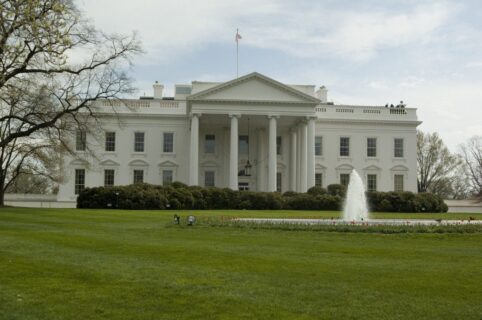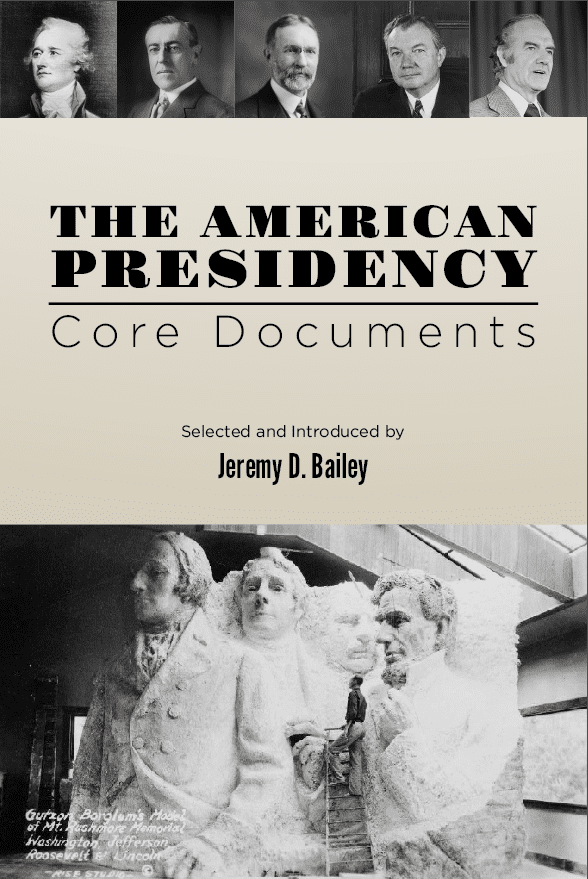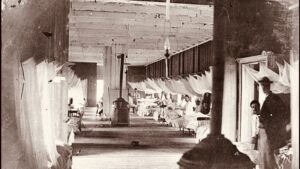
Resources for Teaching the Presidential Election
In honor of the Iowa caucus and the impending presidential election, this week’s blog features one of our CDC volumes, The American Presidency. Edited by Jeremy Bailey and intended as a secondary and post-secondary document reader, American Presidency contains 39 introduced and edited primary sources, discussion questions, and a thematic table of contents. Download it today from our bookstore!
From the Introduction:
This uncertainty over the length and breadth of the president’s power comes not only because the Constitution does not and cannot settle every political controversy, but also because the Constitution begins its own presentation of the presidency with a kind of puzzle. Article Two states, “The executive power shall be vested in a President of the United States of America.” This presumes that there is a power or a set of powers that can be identified as executive even before there is a constitution. That means that either by nature or by custom, the executive power exists and can be identified. This is further suggested by the fact that Article One gives Congress only the legislative powers “herein granted,” that is, those specifically listed in the Constitution, presumably in Article One, Section 8. The problem, however, is that Article Two also goes on to list the powers given to the president in Section Two, leading many commentators to argue that Article Two should be read in the same way as Article One. Others argue that the Constitution intended the difference between Articles One and Two, and that this difference suggests that the president has all the executive power, while Congress only has those legislative powers herein granted.
This puzzle is only partially the result of the language of the text, because there is a deeper problem in designing the presidency. As the executive, the president’s job is to execute the laws. This is the first principle of separation of powers: he who makes laws cannot execute them. In the context of England, separation of powers was first and foremost a check on kingly power. In the context of the United States of the 1780’s, however, separation of powers was accepted as an article of faith, but it was employed to be a check on legislative power. So the Framers of the Constitution made special effort not only to have a separate executive, but also an independent executive, that is, a president with his own electoral constituency and source of authority. But even with this innovation there remained an underlying feature of monarchical discretion. The person who executes the laws will also be the one to determine whether and when to execute the laws. Even if this does not mean the president has the power to make new law, it does reveal that the president as executive is not necessarily simply the enforcement arm of Congress. Rather, as Madison explains in Federalist No. 51, each department is given a “will of its own.” With its own will, and with the unusual wording of the Vesting Clause at the beginning of Article Two, the presidency is an institution that forces serious reflection on what it means to live under the rule of law.
Each of the selections in this volume can be grouped with others and is meant to start a conversation about the presidency. Does the Constitution give the war power to the president or to Congress? Who elects presidents and whom do presidents represent? Can the president remove any executive branch official for any reason, or can Congress create offices that exist beyond the supervisory role of the Chief Executive? Does the Constitution give the president the power to break the law? These questions are enduring not only because we disagree about their answers but also because we disagree about how we should answer them, or rather about who should answer. This volume, then, is first and foremost an invitation to teachers and students to join the dialogue suggested by the documents. Rather than offering a series of precedents or important historical events, the documents offer opportunities for close study and will reward the instructor who can find the time for extended discussion.
Sample from the Thematic Table of Contents:
War Powers and Control of Foreign Policy
- Hamilton and Madison, Helvidius-Pacificus Debate (1793)
- Truman, Special Message to Congress . . . Korea (1950)
- Yoo, On the President’s Constitutional Authority . . . Operations Against Terrorists (2001)
- Obama, Special Address to the Nation on Syria (2013)
Emergency Powers and Civil Liberties during Wartime
- Lincoln, Message to Congress in Special Session (1861)
- Nixon, Interview on the Huston Plan (1977)
- Kennedy and Scalia, Boumediene v. Bush (2008)
For more teacher resources on the presidential election cycle, check out our Spring 2024 webinar series, Every Four Years.
The American Presidency is available for free download from our bookstore. Get your copy today!




